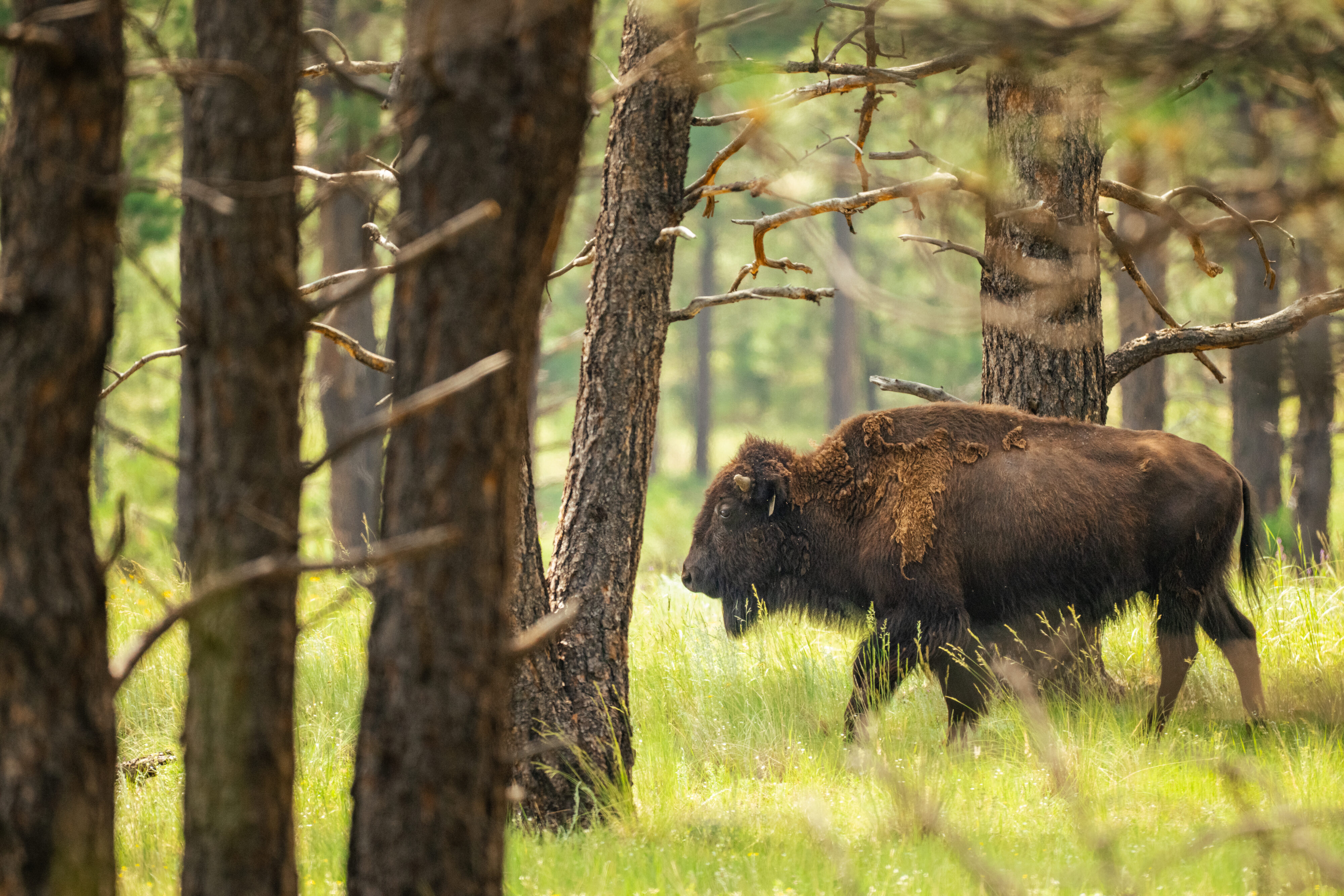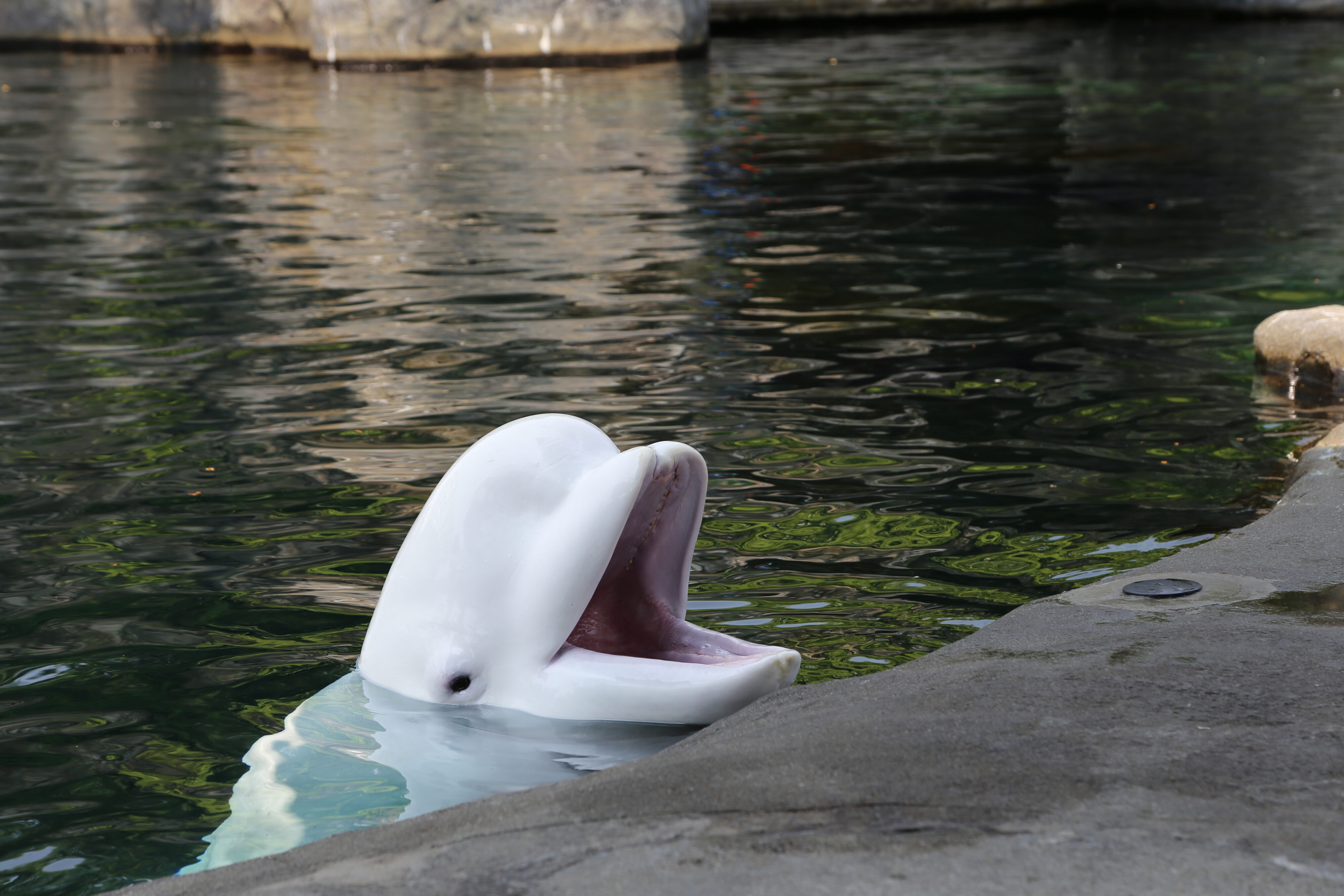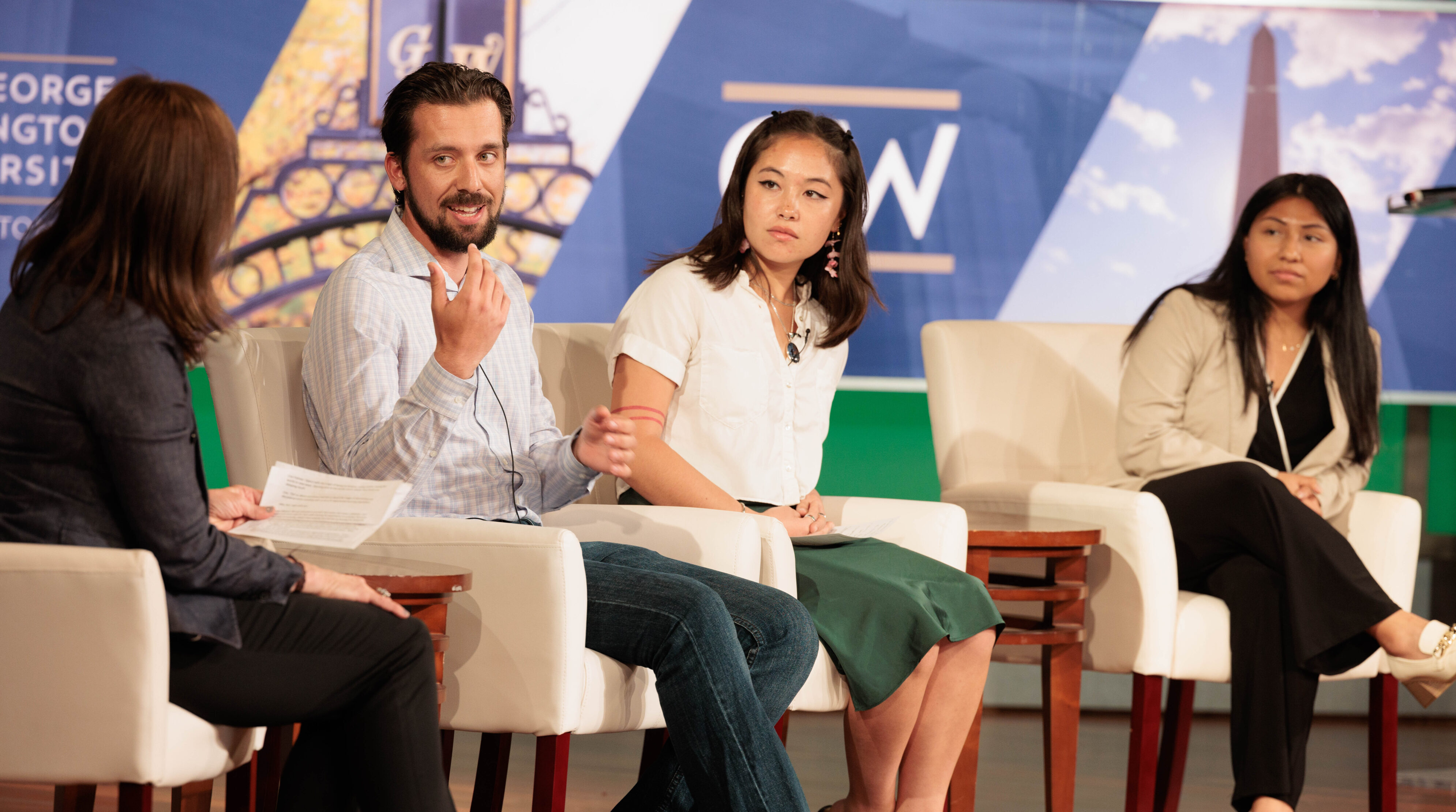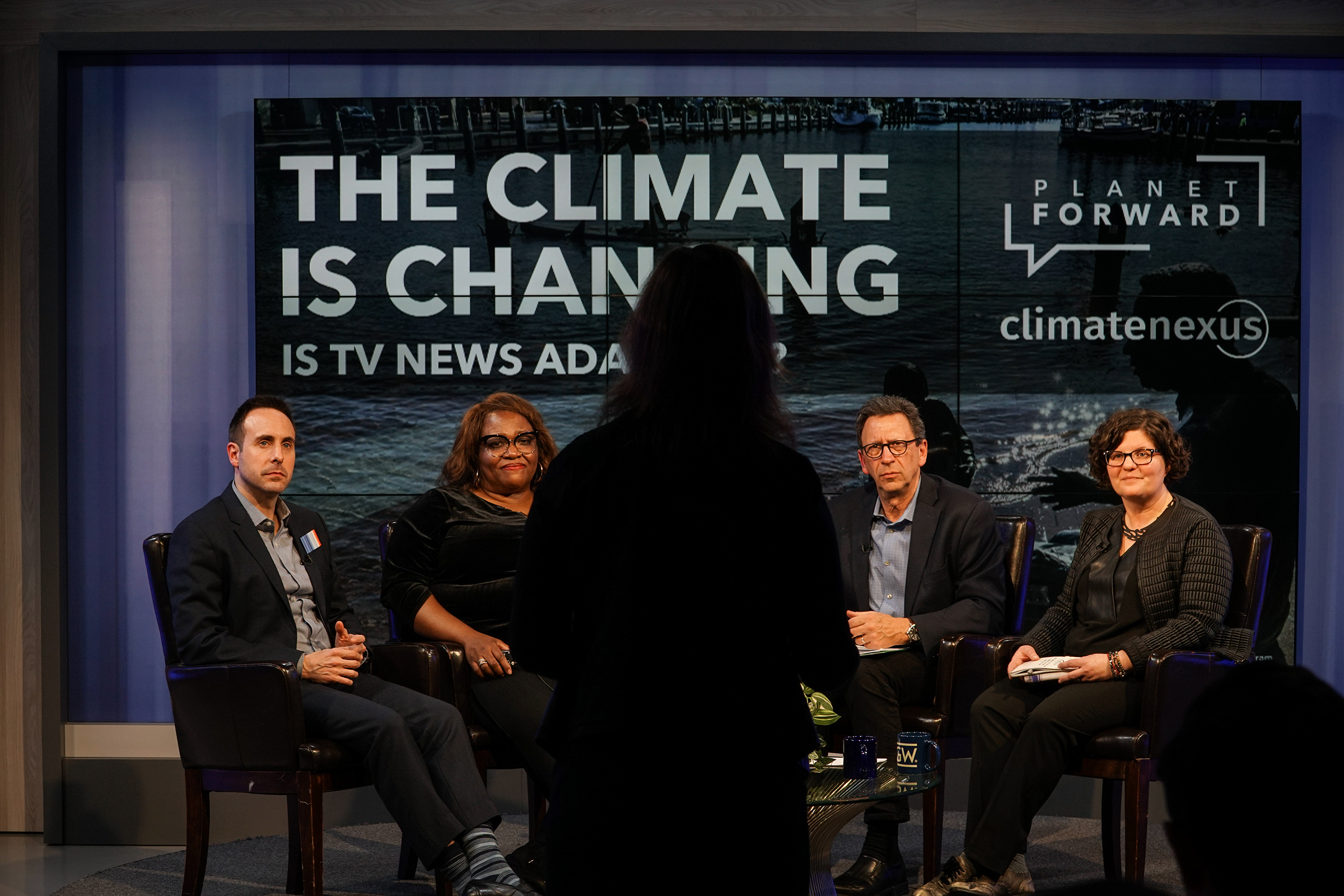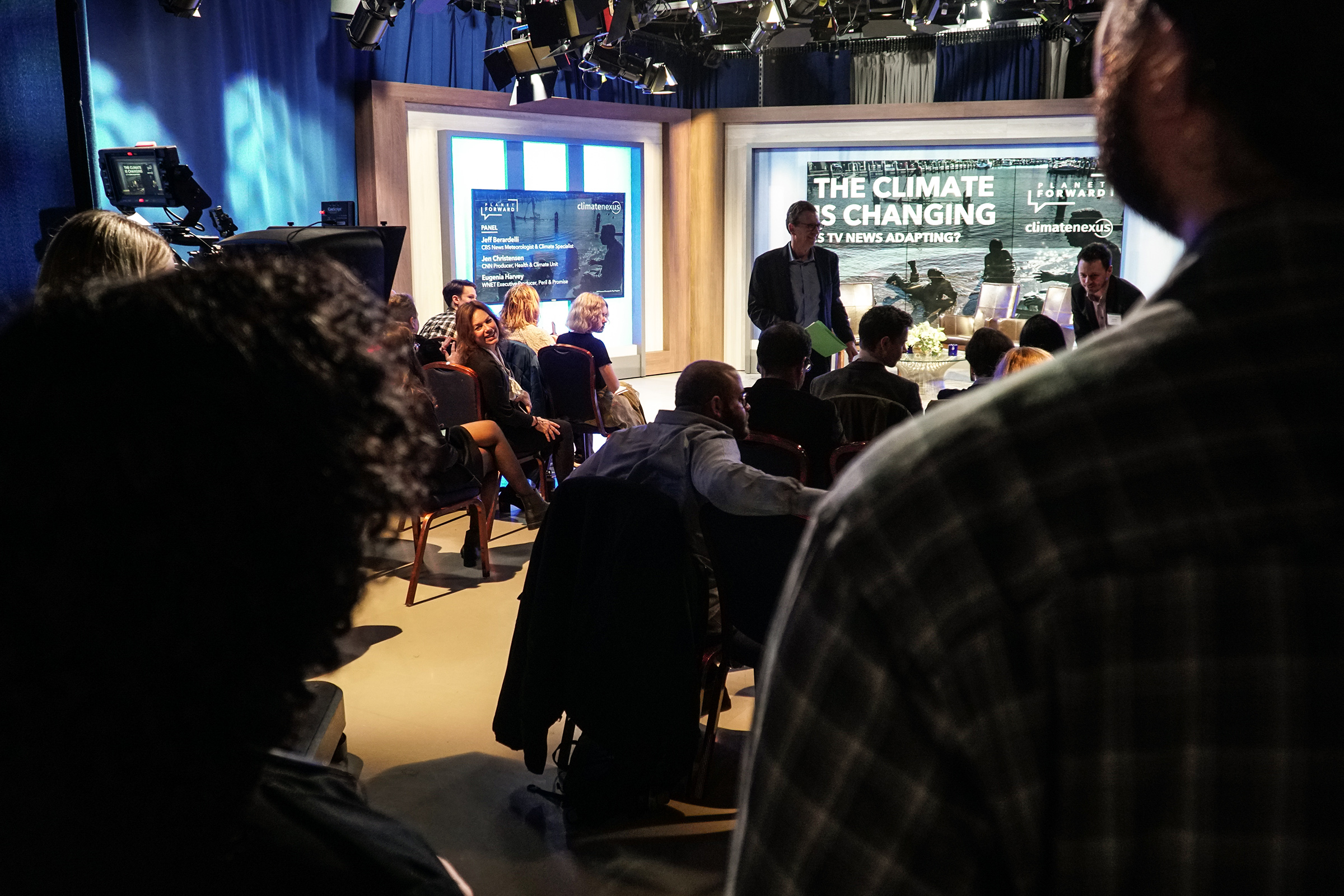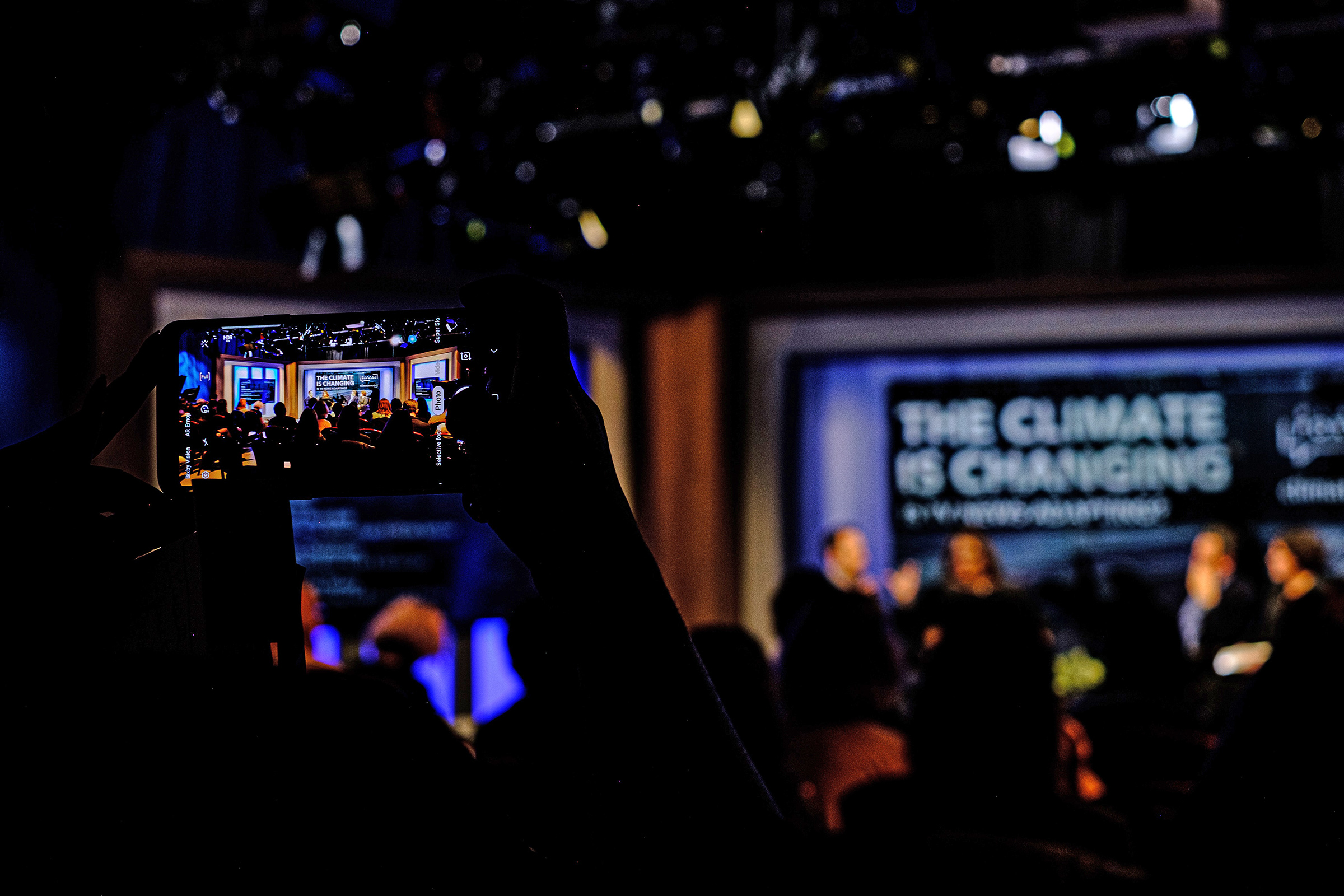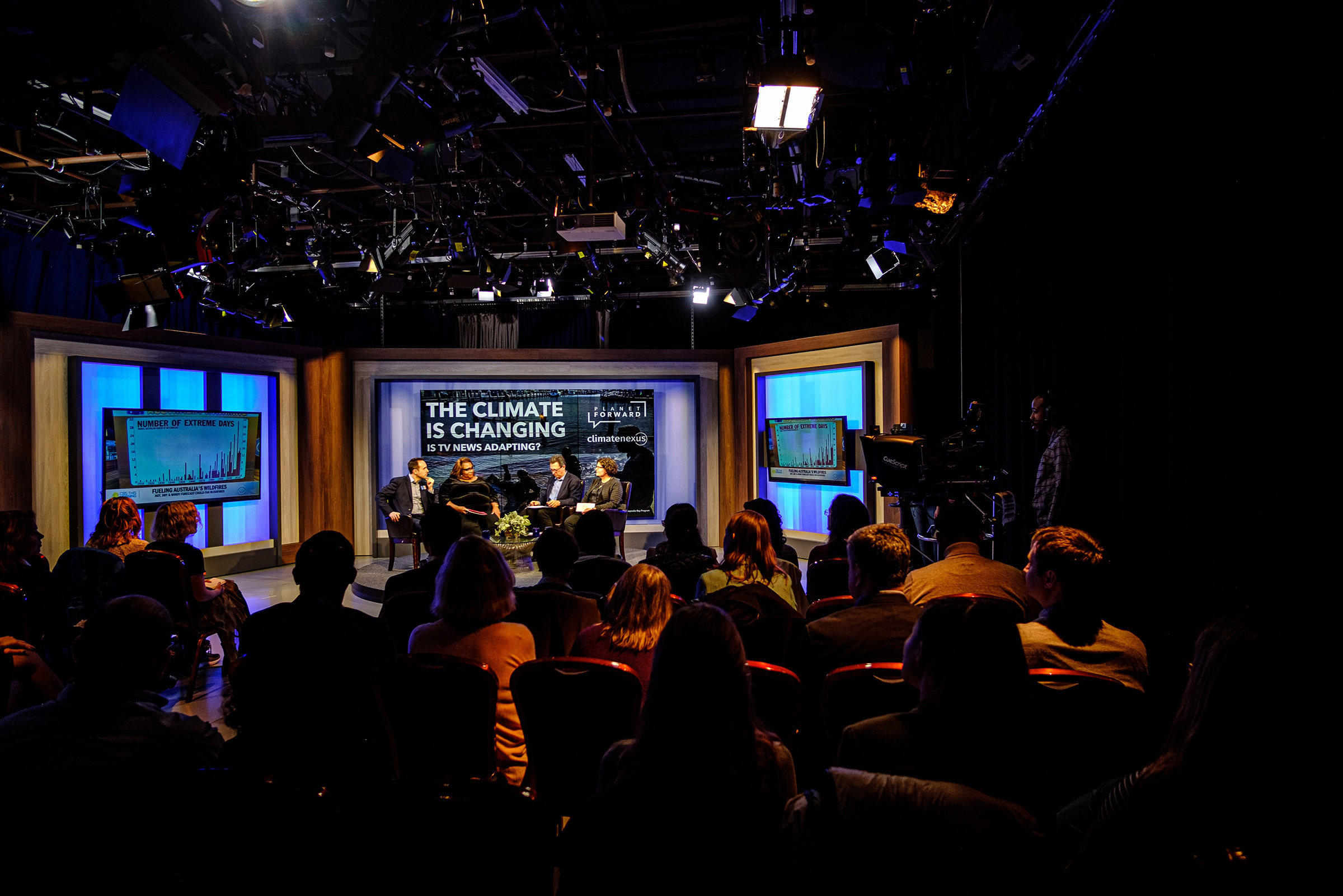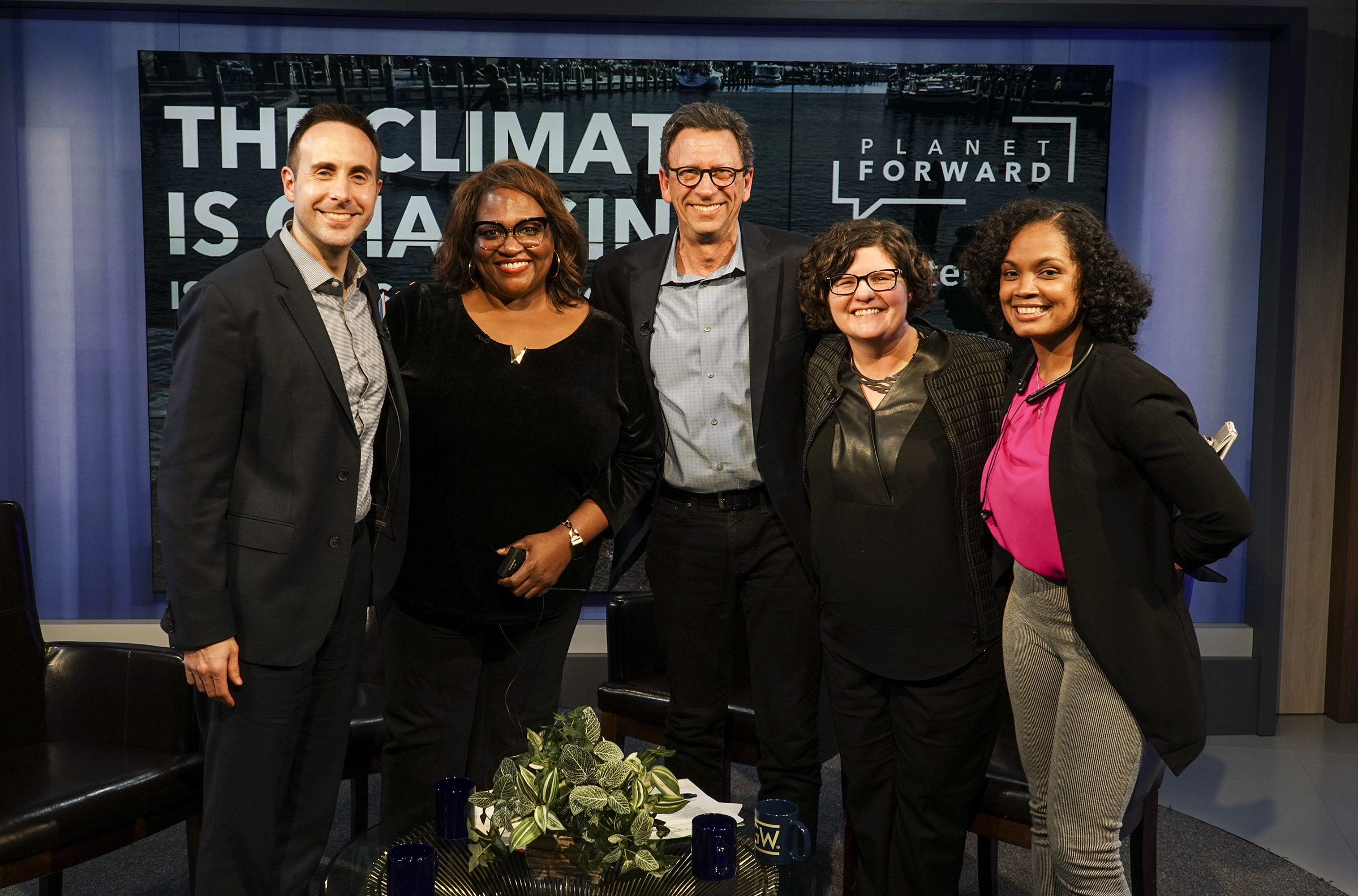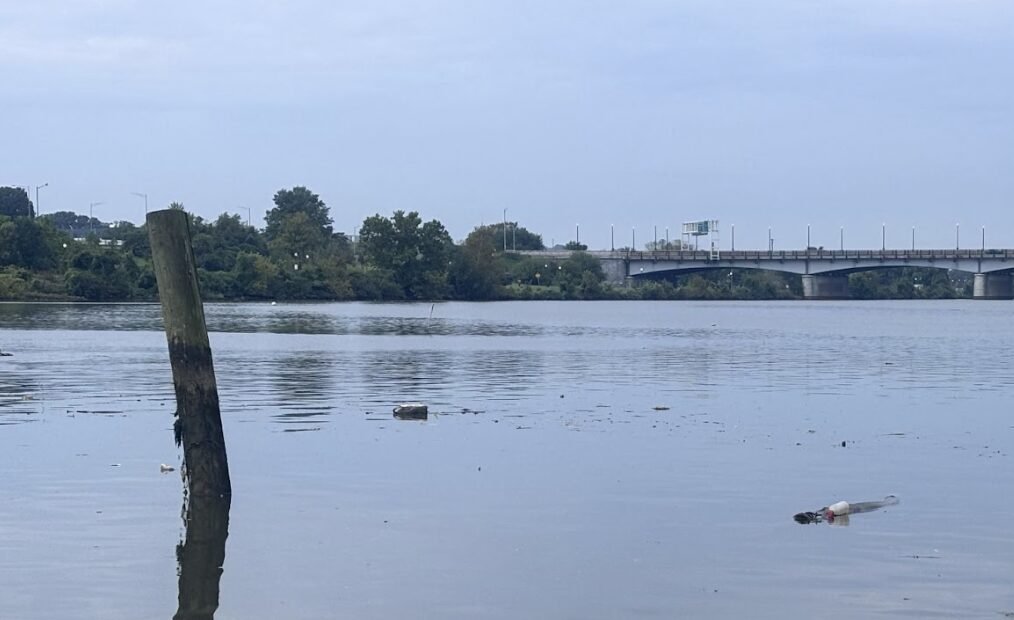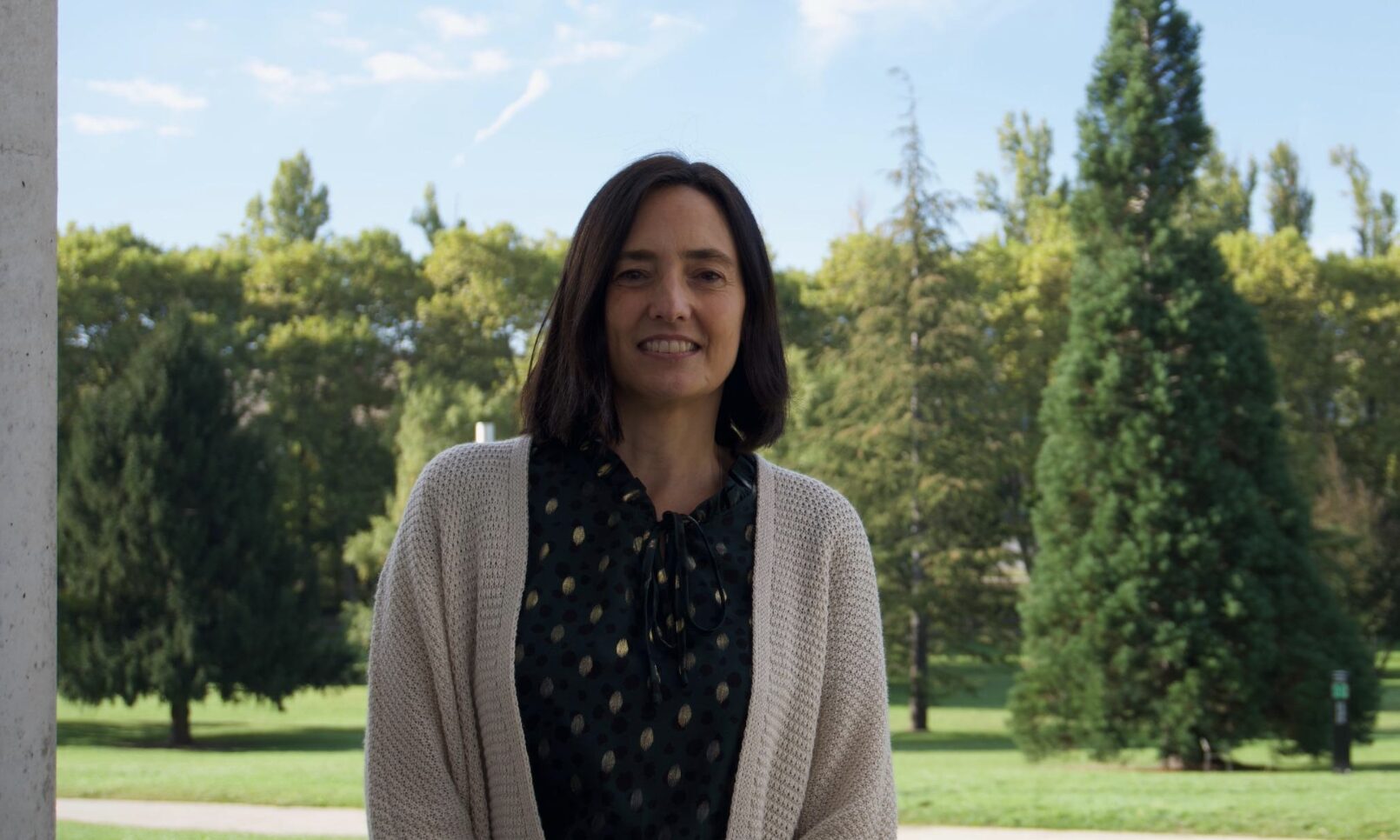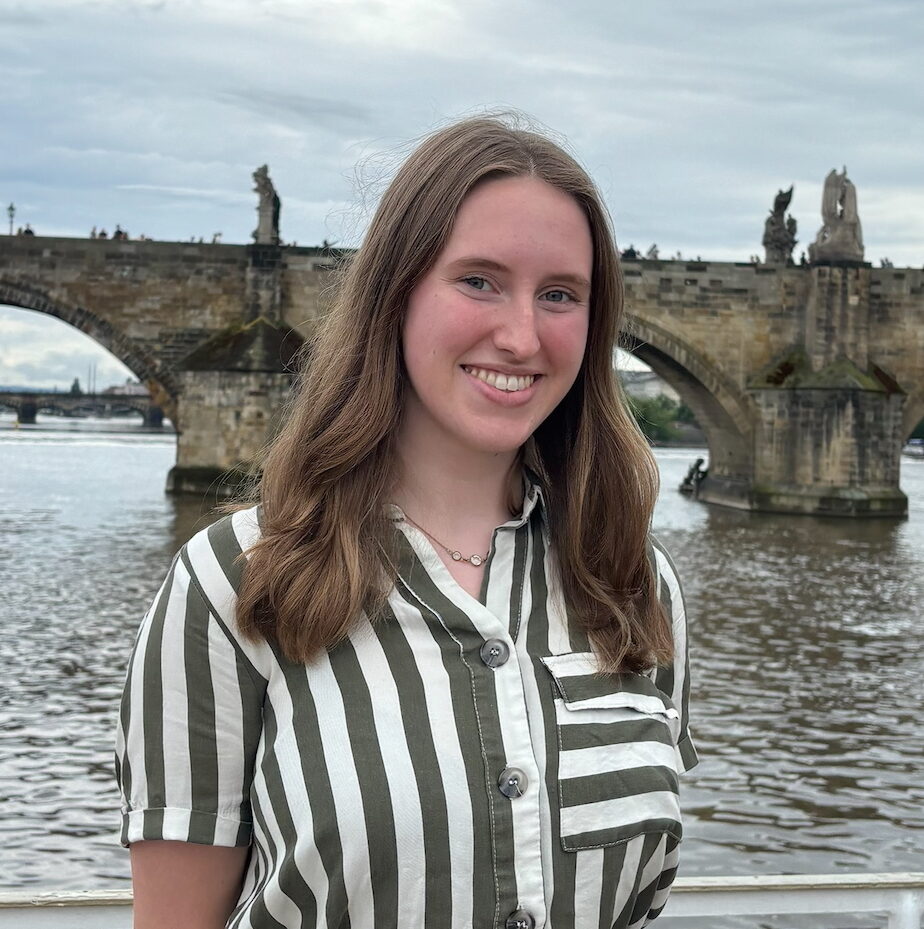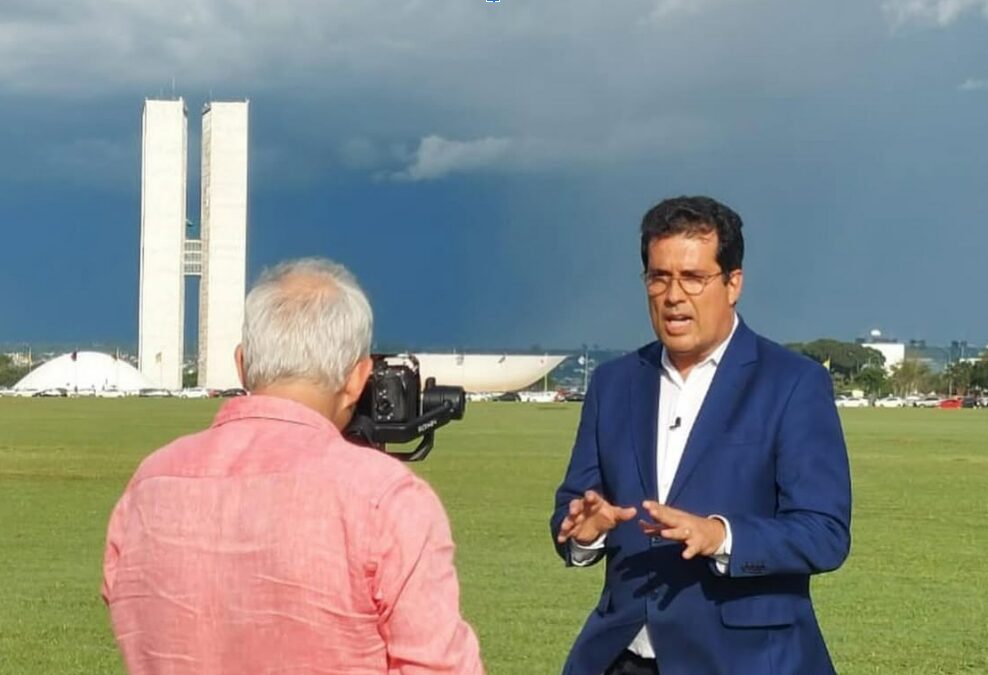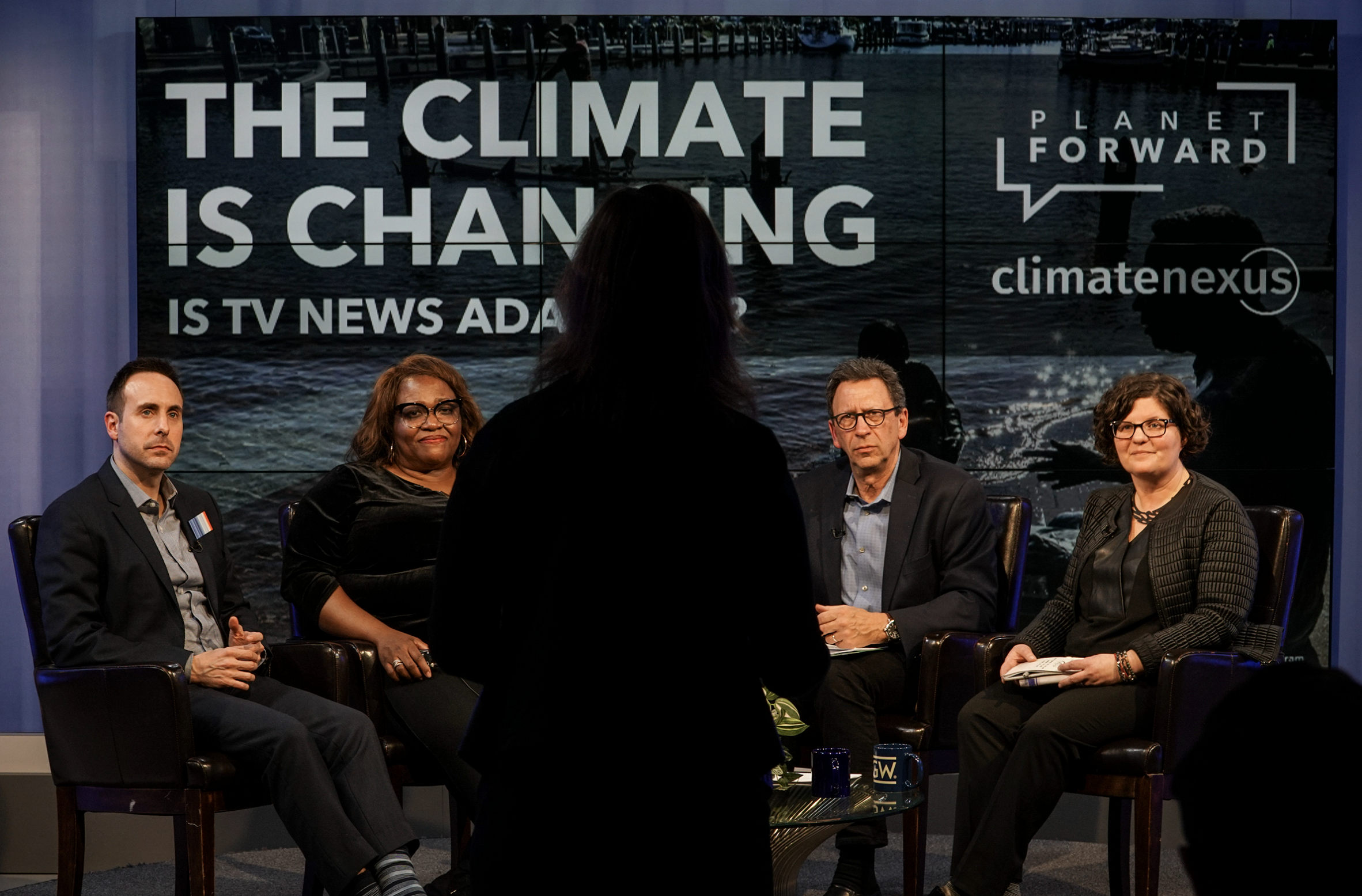
Five takeaways for journalists to take on climate

Three experienced voices on environmental storytelling offered their advice on effective climate coverage in a Planet Forward salon on Feb. 13. Planet Forward founder Frank Senso lead the discussion, co-hosted by Climate Nexus, entitled “The Climate is Changing: Is TV News Adapting?” (You can watch the full event on YouTube.)
Here are our key takeaways from CBS News meteorologist and climate specialist Jeff Berardelli, CNN health and science unit producer Jen Christensen, and WNET executive producer Eugenia Harvey on how to create lasting climate communication that won’t get washed away in the rising tides.
1. Value visuals.
When addressing any story as rich in data as climate change, it’s easy to get lost in the numbers. In 2018, Berardelli quit his job as a chief meteorologist in south Florida to study this data at Columbia University’s Earth Institute. However, when asked about the role of complex science in climate reporting, Berardelli said,“I don’t think there needs to be much.” He recommends finding visual, rather than numerical, means of depicting the changes our planet faces.
In support of this point, Berardelli wore a rectangular, blue, white and orange striped pin on his lapel. This graphic, known as the “warming stripe,” clearly and effectively communicates the rate of increase in global temperatures from 1850-2018, without any need for numbers.
2. Appeal to your audience.
Everyone has a reason to care about climate change. The key is figuring out which reasons are most compelling to your audience. While certain audiences might be alarmed to hear about the rapid rate of species decline, others might be more interested if the issue was framed as an economic one. In that case, the challenges of climate change can be framed as an opportunity for new industry, innovation, and growth.
“Everyone cares about money, unfortunately,” Berardelli said. “That’s just the reality.”
Ultimately, the key to good communication is empathy and the ability to meet people where they are.
“We have to deal with it with kindness and, I think, a lot of compassion,” Harvey said.
3. Create connections.
A crisis of the environment naturally affects everything in it. A climate story is never just about the environment but stories of all sorts can somehow be brought back to the environment.
“There’s so much intersectionality,” Harvey said.
Harvey produced the series “Freedom to Breathe” for PBS in collaboration with Climate Nexus. According to PBS, the series chronicles the impact of climate change on the daily lives of residents of the Southern and Southwestern United States “through health, housing and the economy.” Harvey was drawn to the project as an opportunity to show the real people impacted by environmental racism.
“I saw black and brown faces that are often not shown in these stories,” Harvey said.
Climate change can be used as a frame to discuss systemic social issues relating to race and class that often aren’t given — or can’t be given — a place in fast paced news cycles. Additionally, a climate-conscious angle can be woven into stories that are primarily about other issues such as medicine, infrastructure, and business. The more climate is discussed in the context of other stories, the more prevalent it becomes in popular consciousness.
“Essentially, we have to normalize it,” Christensen said.
4. Hone in on humanity.
The story of climate change is one of humanity and the most effective stories are the ones that center on people.
Christensen, who served as the national president of NLGJA, the Association of LGBTQ Journalists, compared the need to represent those suffering from climate change to queer people “coming out” to advocate for gay marriage. Once those not affected by the issue realized that people they know and love were being affected, they were likely to experience a shift in perspective. By making audiences aware of the ways those in their community are already impacted by climate change, communicators can accelerate the push for action.
“You have to help people to understand why the rest of the world matters,” Christensen said.
Christensen, Harvey, and Berardelli all warned against getting caught up in jargon and terminology that might alienate audiences from the heart of the matter.
“(Climate change) is now an entity that is not just being studied, it is being lived. It is being experienced,” Harvey said. “We need to stop squabbling over terminology.”
5. Root it in reality.
While it might be tempting to get swept up in long-term projections and doomsday scenarios, the most effective climate stories are the ones that are unfolding as we speak. Audiences are less likely to question science when they see it in real-time.
The negative impacts of climate change are tangible in health, agriculture, natural disasters, and more. At the same time, realistic climate solutions and innovations are coming out of communities across the country. By demonstrating practical climate cures, storytellers can create hope and empower audiences to play a positive role.
“Life can be better than it is,” Berardelli said. “We don’t think about that.”




